Alginate NiFe2O4 Nanoparticles Cryogel for Electrochemical Glucose Biosensor Development
Abstract
:1. Introduction
2. Results and Discussion
2.1. NiFe2O4 Nanoparticles Preparation and Characterization
2.2. Alginate NiFe2O4 Nanoparticles Modified Electrode Performance
2.3. NiFe2O4 Nanoparticles Addition Optimization
2.4. Effect of Cyclic Voltammetry Scan Rate
2.5. Effect of Buffer pH and Concentration on the Detection of Hydrogen Peroxide
2.6. Glucose Determination Using Fabricated Biosensor
3. Conclusions
4. Materials and Methods
4.1. Materials
4.2. Apparatus and Measurements
4.3. NiFe2O4 Nanoparticles Preparation
4.4. Alginate Cryogel Electrode Preparation
4.5. Cyclic Voltammetry Optimization
4.6. Buffer pH and Concentration Optimization
4.7. Glucose Determination Using Modified Electrode
Author Contributions
Funding
Institutional Review Board Statement
Informed Consent Statement
Data Availability Statement
Acknowledgments
Conflicts of Interest
References
- Roglic, G. WHO Global report on diabetes: A summary. Int. J. Noncommun. Dis. 2016, 1, 3. [Google Scholar] [CrossRef]
- International Diabetes Federation. IDF Diabetes Atlas, 8th ed.; International Diabetes Federation: Brussels, Belgium, 2017; ISBN 9782930229874. [Google Scholar]
- Yoo, E.H.; Lee, S.Y. Glucose biosensors: An overview of use in clinical practice. Sensors 2010, 10, 4558–4576. [Google Scholar] [CrossRef] [Green Version]
- Naresh, V.; Lee, N. A Review on Biosensors and Recent Development of Nanostructured Materials-Enabled Biosensors. Sensors 2021, 21, 1109. [Google Scholar] [CrossRef]
- Sohrabi, H.; Hemmati, A.; Majidi, M.R.; Eyvazi, S.; Jahanban-Esfahlan, A.; Baradaran, B.; Adlpour-Azar, R.; Mokhtarzadeh, A.; de la Guardia, M. Recent advances on portable sensing and biosensing assays applied for detection of main chemical and biological pollutant agents in water samples: A critical review. TrAC Trends Anal. Chem. 2021, 143, 116344. [Google Scholar] [CrossRef]
- Fatoni, A.; Anggraeni, M.D.; Dwiasi, D.W. Easy and Low-cost Chitosan Cryogel-based Colorimetric Biosensor for Detection of Glucose. J. Anal. Chem. 2019, 74, 933–939. [Google Scholar] [CrossRef]
- Fatoni, A.; Numnuam, A.; Kanatharana, P.; Limbut, W.; Thammakhet, C.; Thavarungkul, P. A highly stable oxygen-independent glucose biosensor based on a chitosan-albumin cryogel incorporated with carbon nanotubes and ferrocene. Sens. Actuators B Chem. 2013, 185, 725–734. [Google Scholar] [CrossRef]
- Fatoni, A.; Numnuam, A.; Kanatharana, P.; Limbut, W.; Thavarungkul, P. A Conductive Porous Structured Chitosan-grafted Polyaniline Cryogel for use as a Sialic Acid Biosensor. Electrochim. Acta 2014, 130, 296–304. [Google Scholar] [CrossRef]
- Varaprasad, K.; Jayaramudu, T.; Kanikireddy, V.; Toro, C.; Sadiku, E.R. Alginate-based composite materials for wound dressing application: A mini review. Carbohydr. Polym. 2020, 236, 116025. [Google Scholar] [CrossRef] [PubMed]
- Bidarra, S.J.; Barrias, C.C.; Granja, P.L. Injectable alginate hydrogels for cell delivery in tissue engineering. Acta Biomater. 2014, 10, 1646–1662. [Google Scholar] [CrossRef]
- Jain, D.; Bar-Shalom, D. Alginate drug delivery systems: Application in context of pharmaceutical and biomedical research. Drug Dev. Ind. Pharm. 2014, 40, 1576–1584. [Google Scholar] [CrossRef]
- Zusfahair, D.R.; Kartika, D.; Kurniasih, M.; Nofiani, R.; Fatoni, A. Improved reuse and affinity of enzyme using immobilized amylase on alginate matrix. J. Phys. Conf. Ser. 2020, 1494, 12028. [Google Scholar] [CrossRef]
- Fatoni, A.; Dwiasi, D.W.; Hermawan, D. Alginate cryogel based glucose biosensor. In Proceedings of the IOP Conference Series, Materials Science and Engineering, Solo, Indonesia, 8–9 September 2015; Volume 107, p. 012010. [Google Scholar] [CrossRef]
- Guastaferro, M.; Reverchon, E.; Baldino, L. Agarose, Alginate and Chitosan Nanostructured Aerogels for Pharmaceutical Applications: A Short Review. Front. Bioeng. Biotechnol. 2021, 9, 688477. [Google Scholar] [CrossRef] [PubMed]
- Gheorghita Puscaselu, R.; Lobiuc, A.; Dimian, M.; Covasa, M. Alginate: From food industry to biomedical applications and management of metabolic disorders. Polymers 2020, 12, 2417. [Google Scholar] [CrossRef] [PubMed]
- Marroquin, J.B.; Rhee, K.Y.; Park, S.J. Chitosan nanocomposite films: Enhanced electrical conductivity, thermal stability, and mechanical properties. Carbohydr. Polym. 2013, 92, 1783–1791. [Google Scholar] [CrossRef] [PubMed]
- Kargan, H. Synthesis of nickel ferrite nanoparticles by co-precipitation chemical method. Int. J. Phys. Sci. 2013, 8, 854–858. [Google Scholar]
- Sagadevan, S.; Chowdhury, Z.Z.; Rafique, R.F. Preparation and characterization of nickel ferrite nanoparticles via co-precipitation method. Mater. Res. 2018, 21. [Google Scholar] [CrossRef] [Green Version]
- Muflihatun, S.S.; Suharyadi, E. Sintesis Nanopartikel Nickel Ferrite (NiFe2O4) dengan Metode Kopresipitasi dan Karakterisasi Sifat Kemagnetannya. J. Fis. Indones. 2015, 19, 20–25. [Google Scholar]
- Bu, Y.; Xu, H.-X.; Li, X.; Xu, W.-J.; Yin, Y.; Dai, H.; Wang, X.; Huang, Z.-J.; Xu, P.-H. A conductive sodium alginate and carboxymethyl chitosan hydrogel doped with polypyrrole for peripheral nerve regeneration. RSC Adv. 2018, 8, 10806–10817. [Google Scholar] [CrossRef] [Green Version]
- Khairy, M.; Gouda, M.E. Electrical and optical properties of nickel ferrite/polyaniline nanocomposite. J. Adv. Res. 2015, 6, 555–562. [Google Scholar] [CrossRef] [Green Version]
- Sadrolhosseini, A.R.; Naseri, M.; Rashid, S.A. Polypyrrole-chitosan/nickel-ferrite nanoparticle composite layer for detecting heavy metal ions using surface plasmon resonance technique. Opt. Laser Technol. 2017, 93, 216–223. [Google Scholar] [CrossRef]
- Unal, B.; Toprak, M.S.; Durmus, Z.; Sözeri, H.; Baykal, A. Synthesis, structural and conductivity characterization of alginic acid–Fe 3 O 4 nanocomposite. J. Nanopart. Res. 2010, 12, 3039–3048. [Google Scholar] [CrossRef]
- Teepoo, S.; Laochai, T. Reusable Optical Biosensor Based on Poly (Vinyl) Alcohol-Chitosan Cryogel with Incorporated Magnetic Nanoparticles for the Determination of Sucrose in Sugar Cane and Sugar. Anal. Lett. 2021, 1–13. [Google Scholar] [CrossRef]
- Supramaniam, J.; Adnan, R.; Kaus, N.H.M.; Bushra, R. Magnetic nanocellulose alginate hydrogel beads as potential drug delivery system. Int. J. Biol. Macromol. 2018, 118, 640–648. [Google Scholar] [CrossRef] [PubMed]
- Liu, Z.; Liu, J.; Cui, X.; Wang, X.; Zhang, L.; Tang, P. Recent advances on magnetic sensitive hydrogels in tissue engineering. Front. Chem. 2020, 8, 124. [Google Scholar] [CrossRef]
- Gila-Vilchez, C.; Bonhome-Espinosa, A.B.; Kuzhir, P.; Zubarev, A.; Duran, J.D.G.; Lopez-Lopez, M.T. Rheology of magnetic alginate hydrogels. J. Rheol. 2018, 62, 1083–1096. [Google Scholar] [CrossRef] [Green Version]
- Ha, Y.; Ko, S.; Kim, I.; Huang, Y.; Mohanty, K.; Huh, C.; Maynard, J.A. Recent advances incorporating superparamagnetic nanoparticles into immunoassays. ACS Appl. Nano Mater. 2018, 1, 512–521. [Google Scholar] [CrossRef] [Green Version]
- Kloster, G.A.; Muraca, D.; Londono, O.M.; Pirota, K.R.; Mosiewicki, M.A.; Marcovich, N.E. Alginate based nanocomposites with magnetic properties. Compos. Part A Appl. Sci. Manuf. 2020, 135, 105936. [Google Scholar] [CrossRef]
- Sharma, S.; Sanpui, P.; Chattopadhyay, A.; Ghosh, S.S. Fabrication of antibacterial silver nanoparticle—Sodium alginate–Chitosan composite films. Rsc Adv. 2012, 2, 5837–5843. [Google Scholar] [CrossRef]
- Bedê, P.M.; da Silva, M.H.P.; Figueiredo, A.B.-H.d.S.; Finotelli, P.V. Nanostructured magnetic alginate composites for biomedical applications. Polímeros 2017, 27, 267–272. [Google Scholar] [CrossRef] [Green Version]
- Jie, G.; Kongyin, Z.; Xinxin, Z.; Zhijiang, C.; Min, C.; Tian, C.; Junfu, W. Preparation and characterization of carboxyl multi-walled carbon nanotubes/calcium alginate composite hydrogel nano-filtration membrane. Mater. Lett. 2015, 157, 112–115. [Google Scholar] [CrossRef]
- Aini, B.N.; Siddiquee, S.; Ampon, K.; Rodrigues, K.F.; Suryani, S. Development of glucose biosensor based on ZnO nanoparticles film and glucose oxidase-immobilized eggshell membrane. Sens. Bio-Sens. Res. 2015, 4, 46–56. [Google Scholar] [CrossRef] [Green Version]
- Shah, A.H.; Zaid, W.; Shah, A.; Rana, U.A.; Hussain, H.; Ashiq, M.N.; Qureshi, R.; Badshah, A.; Zia, M.A.; Kraatz, H.-B. pH Dependent electrochemical characterization, computational studies and evaluation of thermodynamic, kinetic and analytical parameters of two phenazines. J. Electrochem. Soc. 2014, 162, H115. [Google Scholar] [CrossRef]
- Chaudhary, A.; Harma, H.; Hanninen, P.; McShane, M.J.; Srivastava, R. Glucose response of near-infrared alginate-based microsphere sensors under dynamic reversible conditions. Diabetes Technol. Ther. 2011, 13, 827–835. [Google Scholar] [CrossRef] [PubMed]
- Vigneswari, T.; Raji, P. Structural and magnetic properties of calcium doped nickel ferrite nanoparticles by co-precipitation method. J. Mol. Struct. 2017, 1127, 515–521. [Google Scholar] [CrossRef]

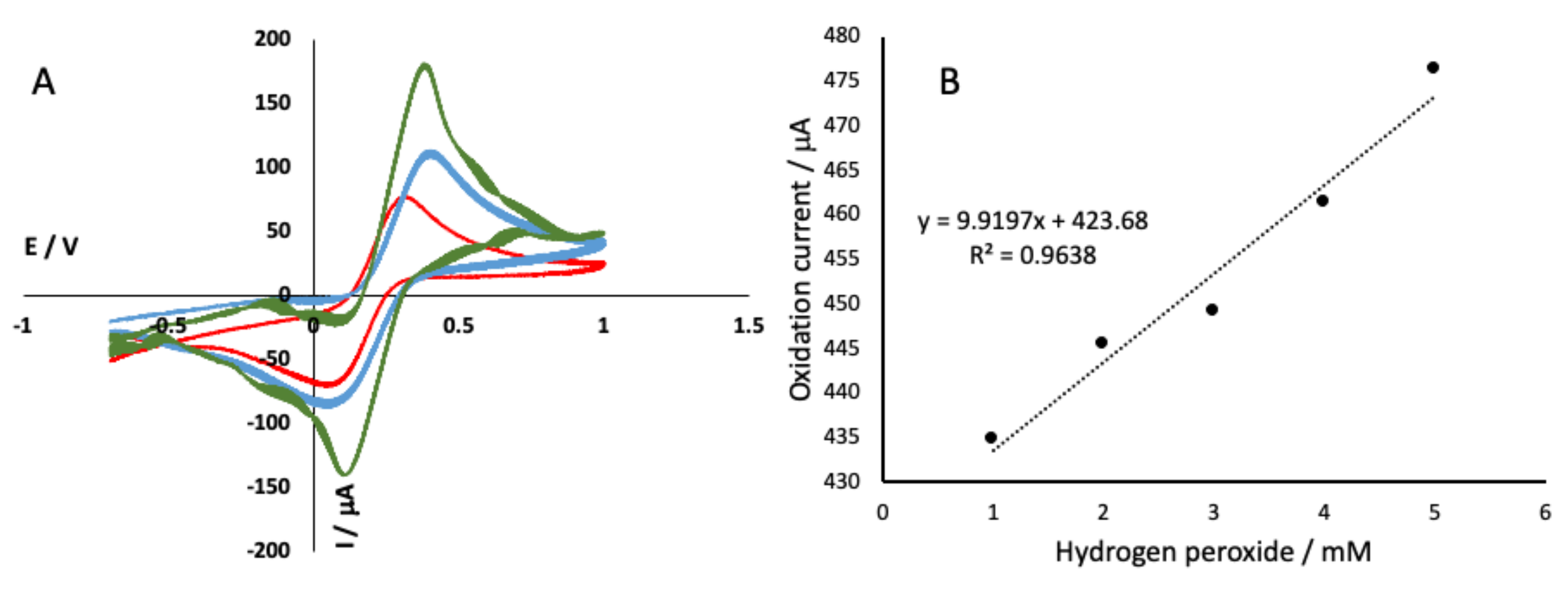
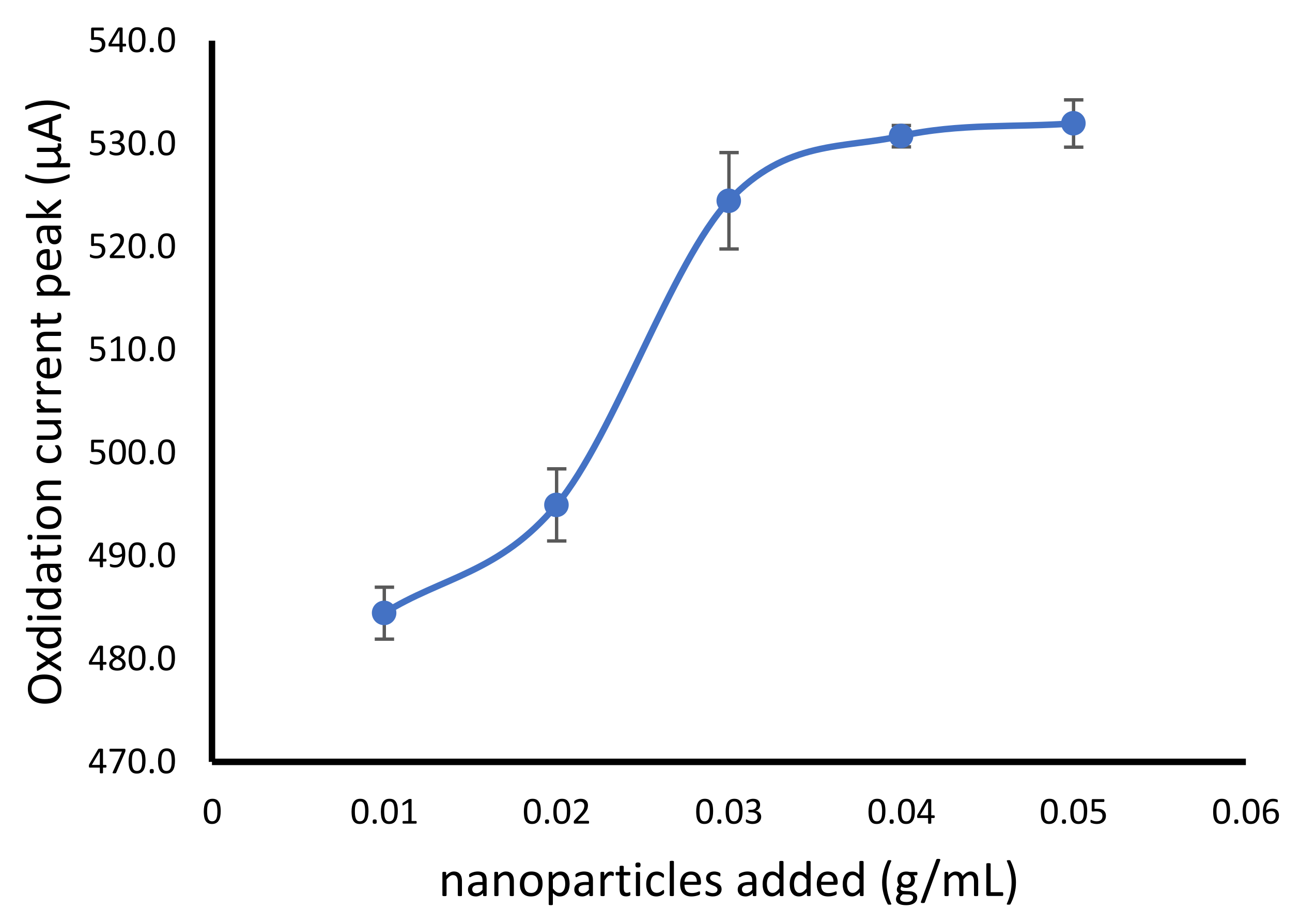
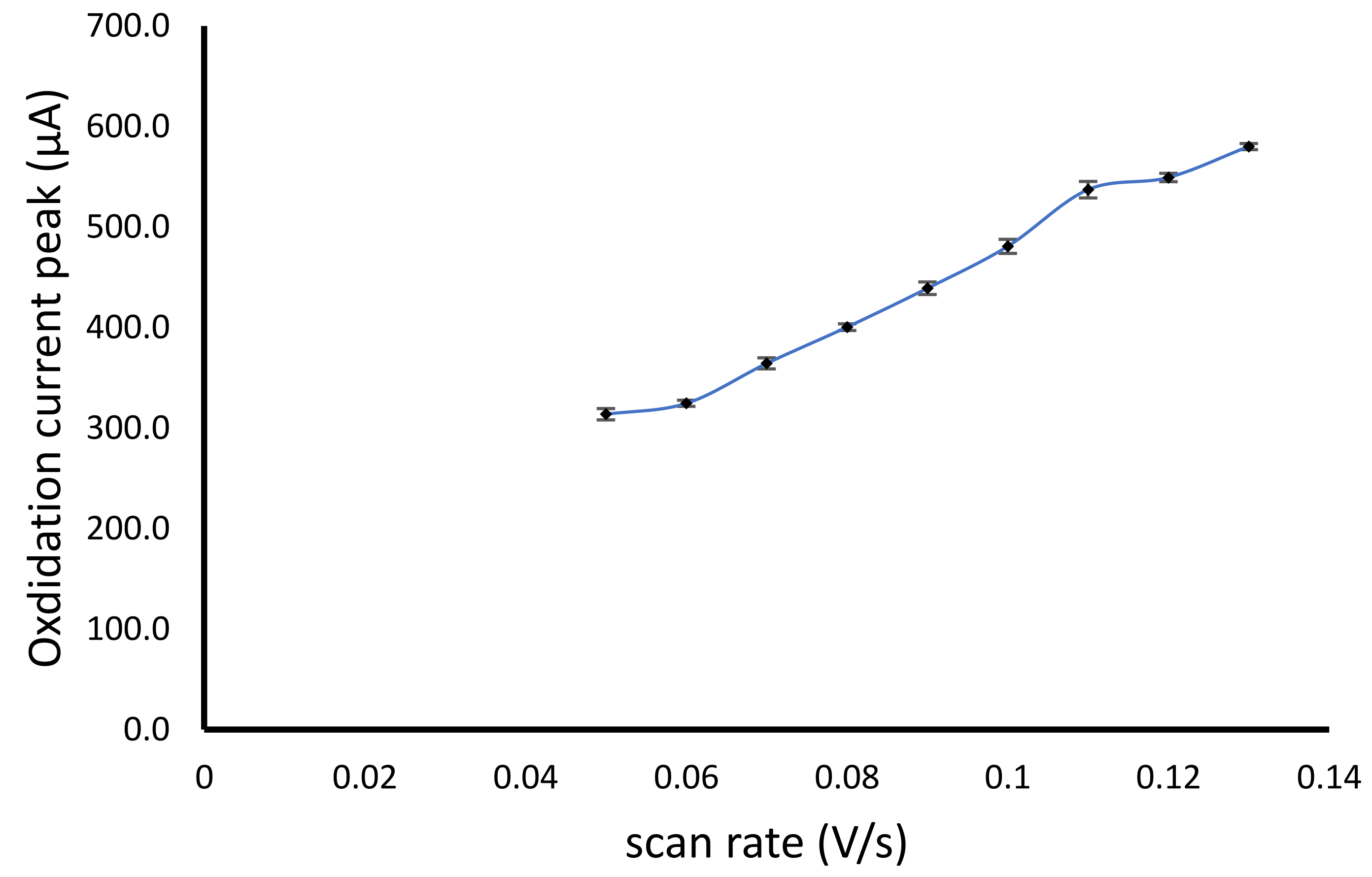
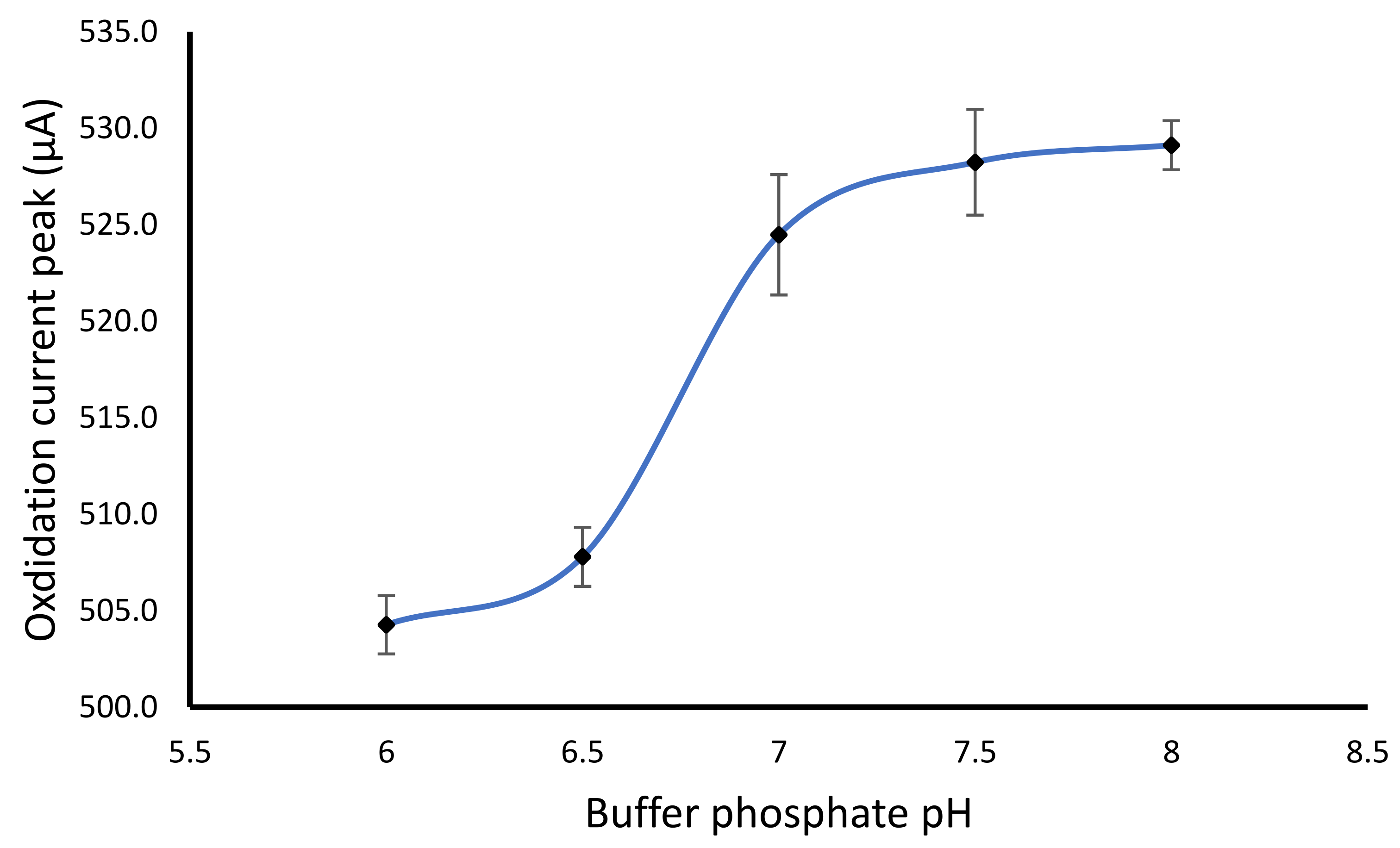
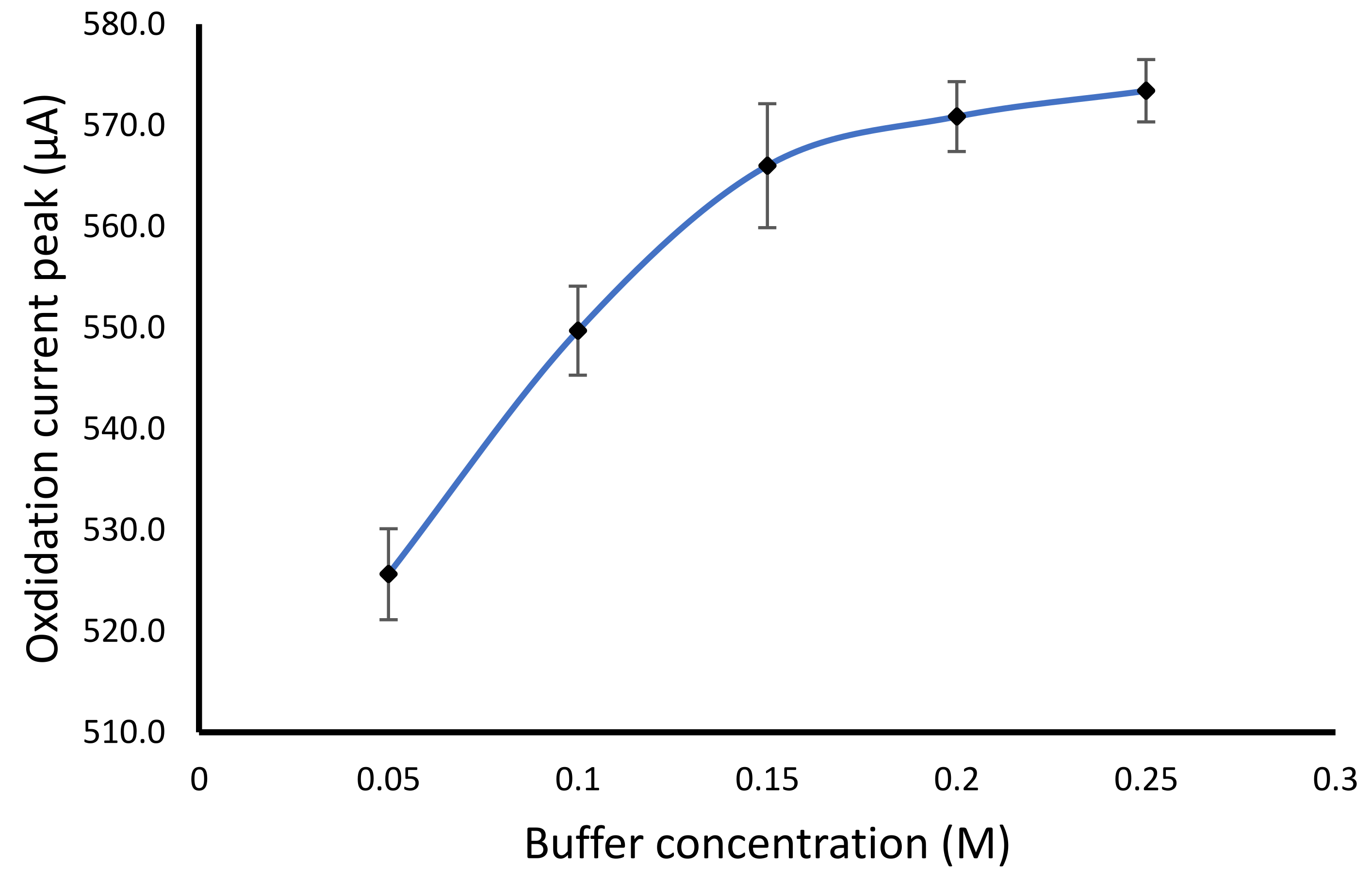
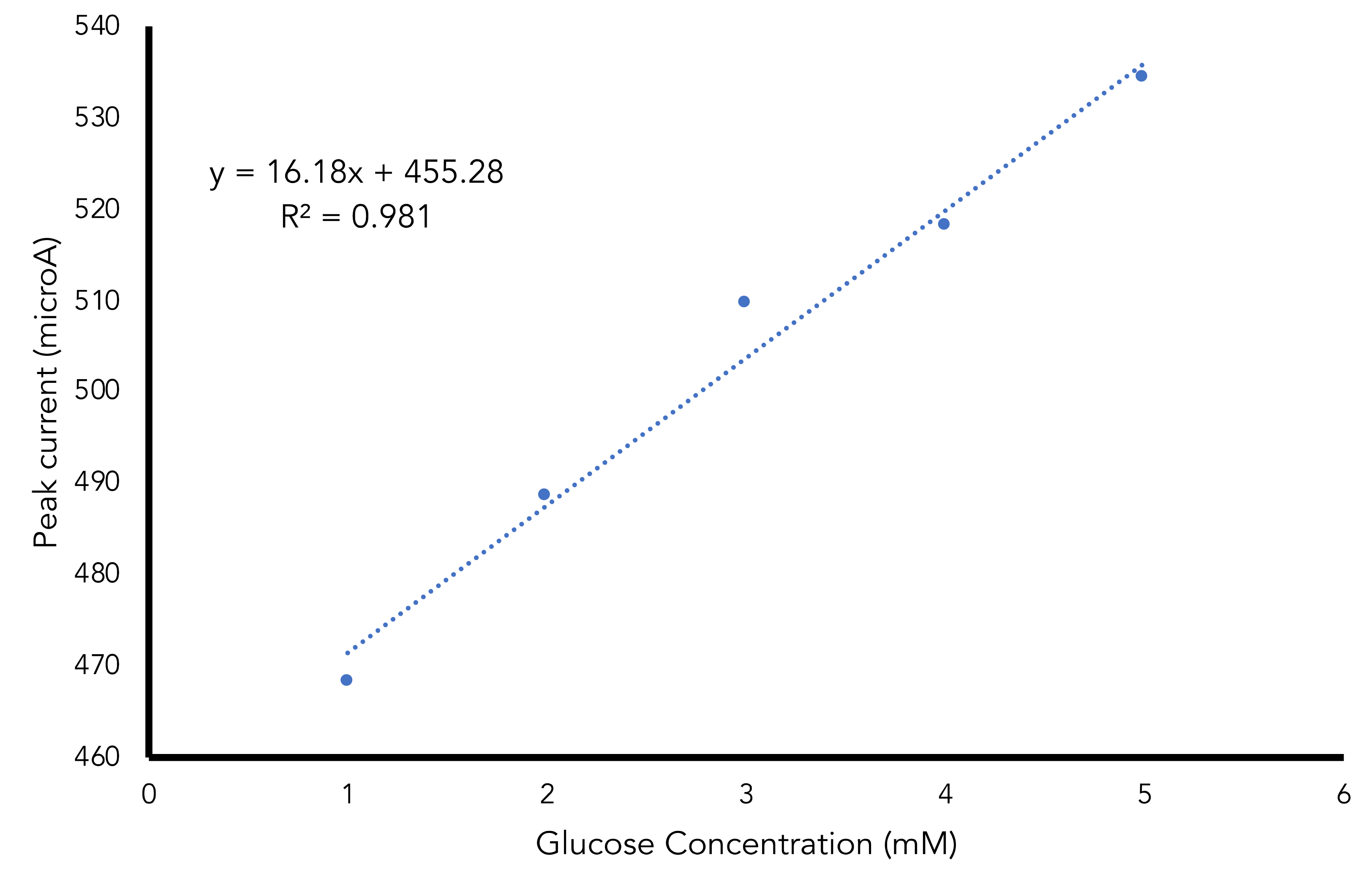
Publisher’s Note: MDPI stays neutral with regard to jurisdictional claims in published maps and institutional affiliations. |
© 2021 by the authors. Licensee MDPI, Basel, Switzerland. This article is an open access article distributed under the terms and conditions of the Creative Commons Attribution (CC BY) license (https://creativecommons.org/licenses/by/4.0/).
Share and Cite
Fatoni, A.; Wijonarko, A.; Anggraeni, M.D.; Hermawan, D.; Diastuti, H.; Zusfahair. Alginate NiFe2O4 Nanoparticles Cryogel for Electrochemical Glucose Biosensor Development. Gels 2021, 7, 272. https://doi.org/10.3390/gels7040272
Fatoni A, Wijonarko A, Anggraeni MD, Hermawan D, Diastuti H, Zusfahair. Alginate NiFe2O4 Nanoparticles Cryogel for Electrochemical Glucose Biosensor Development. Gels. 2021; 7(4):272. https://doi.org/10.3390/gels7040272
Chicago/Turabian StyleFatoni, Amin, Aziz Wijonarko, Mekar Dwi Anggraeni, Dadan Hermawan, Hartiwi Diastuti, and Zusfahair. 2021. "Alginate NiFe2O4 Nanoparticles Cryogel for Electrochemical Glucose Biosensor Development" Gels 7, no. 4: 272. https://doi.org/10.3390/gels7040272
APA StyleFatoni, A., Wijonarko, A., Anggraeni, M. D., Hermawan, D., Diastuti, H., & Zusfahair. (2021). Alginate NiFe2O4 Nanoparticles Cryogel for Electrochemical Glucose Biosensor Development. Gels, 7(4), 272. https://doi.org/10.3390/gels7040272





